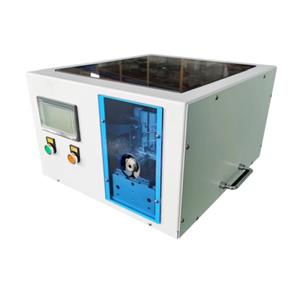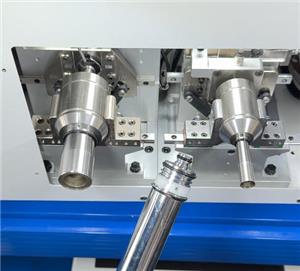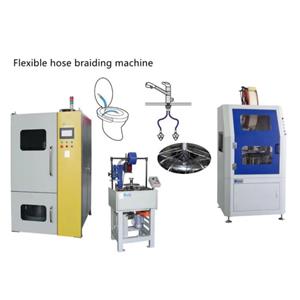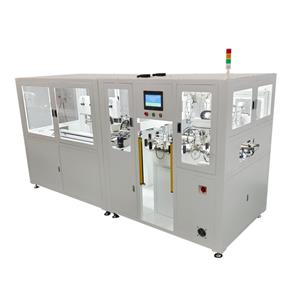High-Precision Braiding Wire Bobbin System Enhances Hose Braiding Efficiency and Quality
Introduction
In the modern era of intelligent manufacturing, every component in a production system plays a vital role in achieving precision, reliability, and productivity. Within the hose manufacturing industry, braiding wire bobbins stand as one of the most crucial elements of the hose braiding machine. These small yet sophisticated units are responsible for the consistent feeding, tension control, and stability of metallic or fiber wires during the braiding process — directly determining the uniformity and durability of the finished hose.
The newly developed braiding wire bobbin system represents a technological breakthrough in hose manufacturing machinery. By integrating high-strength materials, advanced tension control mechanisms, and precision-balanced motion structures, this system ensures superior wire distribution and smooth operation, enabling manufacturers to produce hoses that meet the highest international standards for safety and performance.
Core Function of Braiding Wire Bobbins
In a hose braiding machine, each bobbin holds a spool of stainless-steel wire, copper wire, or synthetic fiber. During operation, these bobbins rotate around the hose mandrel in a complex helical motion, weaving reinforcement layers with perfect geometry.
The stability and precision of each bobbin determine how evenly the wires are placed. Any inconsistency in tension or rotation could lead to defects such as uneven mesh, weak spots, or excessive material usage. Therefore, the design of the bobbin and its tension control system directly impacts hose quality, production speed, and cost efficiency.
Advanced Design and Engineering
1. Precision-Balanced Structure
Each bobbin is manufactured using CNC-machined aluminum alloy and reinforced composite materials to achieve optimal strength-to-weight ratios. This lightweight yet durable construction allows high-speed operation while minimizing vibration.
Dynamic balancing is conducted on every bobbin assembly to eliminate mechanical resonance, ensuring smooth, stable movement even at rotation speeds exceeding 800 revolutions per minute.
2. Intelligent Tension Control
Consistent wire tension is the key to precise braiding. The advanced bobbin system employs a mechanical-automatic tensioner with a real-time feedback mechanism that compensates for spool diameter reduction as wire is consumed.
This ensures that wire tension remains constant from the first meter to the last, maintaining even coverage and avoiding wire overlap or gaps.
In high-end configurations, digital servo-assisted tension control can be implemented, enabling programmable settings for different materials — stainless steel, polyester fiber, or aramid — providing exceptional versatility.
3. Low-Friction Bearing System
The bobbin assembly integrates high-precision ceramic bearings and low-friction bushings, reducing wear and minimizing heat generation during long production runs. The result is quieter operation, reduced maintenance, and longer lifespan of both bobbins and machine components.
4. Safety Lock and Easy Maintenance
To enhance operator safety and efficiency, the system features a quick-release safety lock mechanism, allowing fast spool replacement without halting the entire production line. The modular structure also supports easy cleaning and maintenance, minimizing downtime.
Performance Benefits
The high-precision bobbin system brings measurable improvements to hose manufacturing in several key areas:
• Superior Product Uniformity
Uniform wire tension and smooth motion guarantee consistent braid density and symmetry, ensuring hoses withstand high internal pressures without leakage or deformation.
• Increased Productivity
The optimized weight distribution and low-friction design enable higher machine speeds, allowing manufacturers to increase output without compromising quality.
• Reduced Material Waste
By maintaining accurate tension and wire feeding, the system minimizes wire breakage and over-braiding, reducing raw material waste by up to 8–10%.
• Extended Component Life
The use of advanced materials and intelligent lubrication extends the service life of the bobbin and its bearings, lowering maintenance frequency and total cost of ownership.
• Energy Efficiency
Smooth motion and reduced resistance lead to lower energy consumption during operation, supporting environmentally responsible manufacturing.
Integration with Hose Braiding Machines
This bobbin system is fully compatible with various hose braiding machines, including:
High-speed stainless steel hose braiding machines for plumbing and industrial hoses.
Fiber-reinforced hose braiders for low-pressure or chemical applications.
Double-layer or spiral braiding systems for heavy-duty hydraulic hoses.
Through precise synchronization with the control cabinet, servo drives, and feed rollers, the bobbins operate as part of a unified system that maintains exact braiding patterns and uniform tension across all carriers.
The integration allows automatic detection of wire status — such as depletion, breakage, or abnormal vibration — triggering real-time alarms or automatic adjustments.
Material Versatility
The braiding bobbin system can handle a wide range of wire and filament materials, including:
Stainless steel wire (SS304 / SS316)
Tinned copper wire
Polyester or nylon monofilament
Aramid fiber (Kevlar®)
Aluminum and brass wire
By supporting different diameters and material types, the system meets the diverse needs of manufacturers serving plumbing, automotive, aerospace, and industrial markets.
Quality Control and Testing
Before assembly, each bobbin undergoes strict testing to ensure precision and durability:
Dynamic Balancing Test – verifies stability during high-speed rotation.
Tension Calibration Test – measures output consistency under different speeds.
Endurance Test – simulates 1,000 hours of continuous operation.
Surface Treatment Inspection – ensures corrosion resistance and smooth finish.
Only components that pass all inspections are installed into the production machines, guaranteeing top-level performance reliability.
Digital Integration and Smart Monitoring
As part of a modern smart braiding line, the bobbin system can integrate with the machine’s PLC (Programmable Logic Controller) for real-time digital supervision.
Through the central touchscreen interface, operators can monitor parameters such as:
Wire tension and rotation speed per bobbin
Wire consumption rates
Remaining spool length
Maintenance alerts
This digital connectivity enhances traceability, supports predictive maintenance, and ensures consistent quality across production batches.
Applications Across Industries
The improved hose braiding process benefits numerous industries where durability, flexibility, and pressure resistance are essential.
1. Plumbing and Sanitary Applications
Braided hoses for kitchen and bathroom fittings require corrosion resistance and aesthetic appeal. Precision-braided stainless steel wires ensure leak-proof performance and long-term reliability.
2. Automotive and Hydraulic Systems
High-pressure hoses used in brakes, fuel lines, and hydraulic systems rely on consistent reinforcement. The bobbin system ensures uniform braiding angles and tension stability for safety-critical components.
3. Aerospace and Defense
Lightweight and high-strength braided tubes are used in fuel transfer, cooling, and sensor protection. The bobbin’s precision enables tight tolerance control required by aerospace standards.
4. Chemical and Industrial Processing
For chemical-resistant or heat-resistant hoses, uniform braiding maintains structural integrity under extreme conditions.
Sustainability and Efficiency
The modern hose production industry places increasing emphasis on energy conservation, waste reduction, and sustainable material usage. The braiding wire bobbin system contributes to these goals by:
Reducing wire waste through tension stability.
Lowering electricity consumption via optimized rotational dynamics.
Supporting recyclable materials and environmentally friendly lubricants.
These features align with the principles of green manufacturing and help companies meet global sustainability certifications.
Maintenance and Longevity
The bobbin system is designed for long-term use with minimal maintenance requirements. Regular inspection intervals are supported by clear visual indicators and digital maintenance logs accessible from the machine’s interface.
Operators can quickly replace worn tensioners or bearings without complex disassembly, reducing downtime and maintaining continuous production efficiency.
With proper care, each bobbin assembly can last over five years of intensive operation, representing excellent value for manufacturers.
Technological Evolution
The development of modern bobbin systems reflects the overall technological progress in the hose manufacturing sector. From manual tension control to digital synchronization, every innovation enhances accuracy, productivity, and safety.
Future upgrades are expected to introduce:
Fully digital tension calibration for material-specific optimization.
Wireless communication modules for remote diagnostics.
Automatic bobbin exchange systems to support continuous 24-hour production.
AI-based production analytics for real-time process optimization.
These advancements will further solidify the role of precision bobbin technology as a cornerstone of next-generation hose production.
Conclusion
The braiding wire bobbin system is much more than a mechanical component — it is the foundation of precision and reliability in hose manufacturing. Its advanced design, intelligent tension control, and seamless digital integration enable manufacturers to achieve consistent product quality, reduce operational costs, and improve sustainability.
By ensuring stable performance at high speeds, accommodating multiple wire types, and offering long-term durability, this system plays a vital role in driving the evolution of modern hose braiding technology.
As industries continue to pursue smarter, greener, and more efficient production methods, the innovation behind the braiding wire bobbin system demonstrates that even the smallest components can make the greatest difference in performance, quality, and competitiveness.




